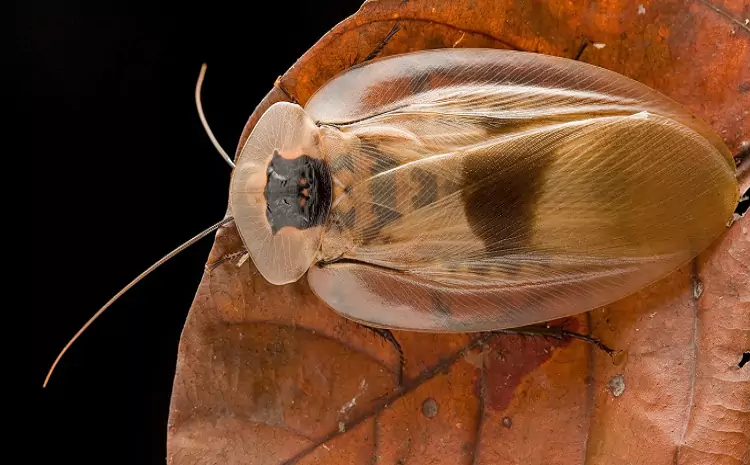Cockroaches are one of the most resilient and adaptable creatures on the planet. This raises an interesting question: Do cockroaches have brains? Understanding the nervous system of cockroaches can shed light on their incredible survival abilities and behavior.
Key Takeaways
- Cockroaches do have brains, but they function differently from human brains.
- Their brains are not centralized like human brains.
- Cockroaches have ganglia throughout their bodies that help them function.
- Cockroaches can survive without their heads for a significant period.
Introduction
Cockroaches are often seen as pests, but their biology is fascinating. One common question people ask is whether cockroaches have brains. This article explores the anatomy and functionality of cockroach brains, explaining how these insects operate and survive in various environments.
Understanding the Cockroach Nervous System
Anatomy of a Cockroach Brain
Cockroaches do have brains, but their nervous system is quite different from that of humans. The brain of a cockroach is not centralized. Instead, it is distributed throughout its body.
| Component | Function |
|---|---|
| Brain | Controls basic functions and processes sensory information |
| Subesophageal Ganglion | Located below the brain, controls mouthparts and feeding |
| Thoracic Ganglia | Control movement of legs and wings |
| Abdominal Ganglia | Control functions of the abdomen, including digestion |
Central vs. Distributed Nervous System
Humans possess a centralized brain with about 100 billion brain cells. In contrast, cockroaches lack a centralized brain. Instead, they have a series of ganglia – clusters of neurons – spread throughout their bodies. Each ganglion controls different functions, allowing cockroaches to continue functioning even if part of their nervous system is damaged.
Cockroach Brain Functionality
Sensory Processing
The cockroach brain processes sensory information from their antennae, eyes, and other sensory organs. This allows them to detect food, danger, and mates. The brain’s ability to process this information is crucial for the cockroach’s survival.
Movement and Coordination
Despite their small size, cockroaches have a sophisticated system for movement and coordination. The thoracic ganglia control the legs and wings, enabling the cockroach to run rapidly and even fly. This decentralized system means that even if a cockroach loses its head, it can still move and react to its environment.
Survival Mechanisms
Living Without a Head
One of the most remarkable abilities of cockroaches is their capacity to survive without a head. This is because the nervous system is decentralized. The thoracic and abdominal ganglia continue to function, controlling basic activities like movement and digestion. However, a headless cockroach eventually dies due to the inability to drink water.
Adaptability and Resilience
Cockroaches are known for their resilience. They can survive in harsh environments, withstand radiation, and go for long periods without food. Their nervous system plays a significant role in this adaptability. The brain and ganglia work together to ensure that the cockroach can respond quickly to changes in its environment, find food, and avoid predators.
Cockroach Brain Research
Scientific Studies
Researchers have studied cockroach brains to understand more about insect neurobiology. These studies reveal that cockroaches have identifiable neurons that help them process information and react to stimuli. Understanding these neurons can provide insights into the broader field of neurobiology and help develop better pest control methods.
Applications in Robotics
Interestingly, the neural makeup of cockroaches has inspired developments in robotics. Scientists study cockroach movement and nervous system functionality to create robots that mimic these insects’ agility and resilience. These robots could be used in search and rescue missions or to explore hazardous environments.
Common Misconceptions
Do Cockroaches Think?
While cockroaches have brains, they do not think in the way humans do. Their brains process sensory information and control basic functions, but they lack the complexity and consciousness of human brains. The idea that cockroaches can think or feel emotions is a misconception.
Do Cockroaches Feel Pain?
The question of whether cockroaches feel pain is still debated. Some research suggests that insects might have a rudimentary ability to sense harm, but it is not the same as human pain perception. Cockroaches’ brains and nervous systems allow them to react to harmful stimuli, but this reaction is more about survival than experiencing pain.
Preventing Cockroach Infestations
Practical Tips
Understanding the biology of cockroaches, including their brains, can help in controlling and preventing infestations. Here are some practical tips:
| Action | Purpose |
|---|---|
| Clean Regularly | Remove food sources that attract cockroaches |
| Seal Cracks and Holes | Prevent entry points into your home |
| Store Food Properly | Keep food in airtight containers to avoid attracting pests |
| Use Baits and Traps | Effectively reduce cockroach populations |
| Consult Professionals | Seek help from pest control experts for severe infestations |
Conclusion
Cockroaches are remarkable creatures with a decentralized nervous system that allows them to survive in challenging environments. While they do have brains, their nervous system is spread throughout their bodies, giving them incredible resilience and adaptability.
Understanding the brain structure and functionality of cockroaches not only satisfies curiosity but also helps in developing better pest control methods and even advances in robotics. By learning more about these pests, we can better manage their presence in our homes and appreciate the complexity of their biology.

Mark Thompson, a seasoned pest controller, is renowned for his expertise in keeping homes and businesses free from unwanted intruders. With a passion for environmental sustainability and a deep understanding of pest behavior, Mark has become a trusted authority in the industry.
